Have you ever heard someone say that they developed 'hives' after having an allergic reaction? Well, they aren't talking about any common rash here; hives, also known as urticaria, is an irritating skin condition that develops in the form of welts or wheals over someone's body. Irritating to get, no one wants hives — but the good news is, it's super easy to treat! But in order to cure the problem, we must first understand the problem, so let's look at what this skin condition actually is.
- What Are Hives?
- Types Of Hives
- Causes Of Hives
- Symptoms Of Hives
- Hives Treatment
- Home Remedies For Hives
- Difference Between Hives And Rashes
- When To See A Doctor
What Are Hives?
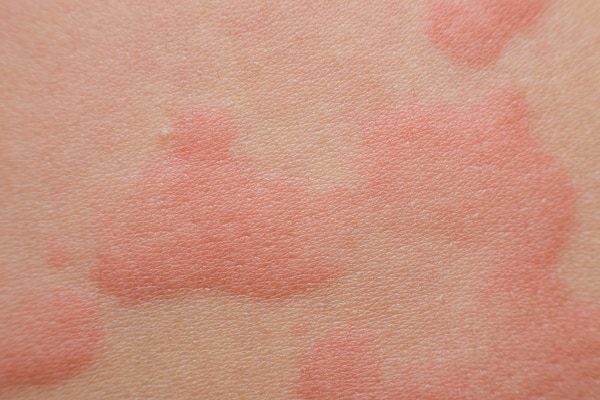
So, we may have a visual idea of what hives look like. But we wanted to build a deeper understanding of the skin condition, which is why we reached out to Dr. Soma Sarkar, a renowned celebrity dermatologist, to lend her expertise to the subject. "Hives are allergic reactions to certain irritant factors or substances like washing powders, detergents or even hair dyes. Other times, even pollen grains, dust can cause hives. Hives are itchy in nature, and can spread from one part of your body to other parts — including your internal systems as well," she says. To identify the irritant when you have hives, it's super important to get clarity on the types of urticaria that exist, so you can go ahead and treat it. Ahead, we're listing them down.
Types Of Hives
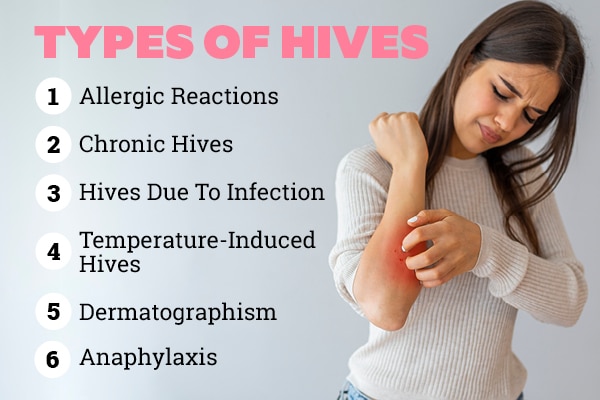
While the symptoms of hives generally remain the same for all types, it's important to distinguish between its different types, to understand how it can be treated. Here are its different types:
01. Allergic Reactions
Perhaps the most common type of hives, these refer to hives that are caused by, as the name suggests, allergic reactions. Also known as acute hives, these can be caused due to different allergies. Dr. Sarkar further elaborates, "The most common irritant that causes hives to develop is food allergies. Food articles like peanuts, chickpea flour, or additives like preservatives or food colouring, tinned and canned food can cause allergic reactions. Even food from roadside stalls that contains monosodium glutamate can cause hives."
She further continues, "Hives could also be because of pet danders, carpet dust, if you have too much dust around you, or even if you're very allergic to certain medication. Alcohol, alcohol in perfumes, and even application of roll ons can cause hives. In our clinic, we also see hives being caused by contact dermatitis caused due to contact dermatitis.
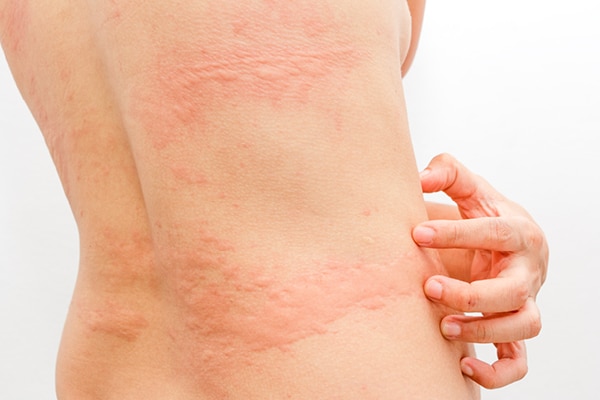
02. Chronic Hives
Chronic hives refer to hives which last over a period of 6 weeks, and are more often than not, attached to an underlying medical condition. This type, also referred to as angioedema, can most commonly spread to other internal organs of the body, and cause a much more intense swelling of the skin — which is why it's important to refer to a doctor to get this treated as soon as possible.
03. Hives Due To Infection
Certain infections caused by bacteria and viruses can make your skin break out in hives, including UTIs, strep throat, hepatitis, and even the flu. With these conditions being treated, the hives mostly disappear too.
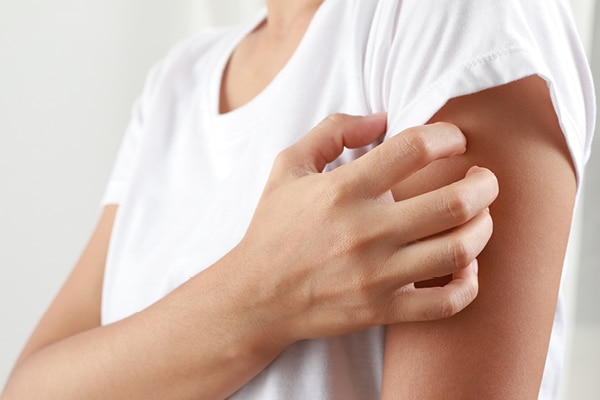
04. Temperature-Induced Hives
If you are particularly sensitive to weather changes, your skin may pay the price. Temperature-induced hives are fairly common in those who are susceptible to sudden weather changes, and you may get cold-induced hives or even exercise-induced hives if you're not careful!
05. Dermatographism
A mild form of hives that is generally caused by an allergic reaction, dermatographism can be caused when you excessively itch an area of your skin, thus triggering it. This skin condition, which generally clears up on its own without treatment, is also called 'skin-writing' because a lot of people are able to create words and shapes on their skin simply by applying a little bit of pressure on it. Fascinating, isn't it?
06. Anaphylaxis
This one may just be the most severe form of hives, since it's usually accompanied by an anaphylactic shock. If you're allergic to something in a life-threatening manner, you could get hives that come with breathing difficulties, dizziness, and other debilitating symptoms. If you think you're experiencing anaphylaxis, you need to visit the emergency room ASAP!
Causes Of Hives
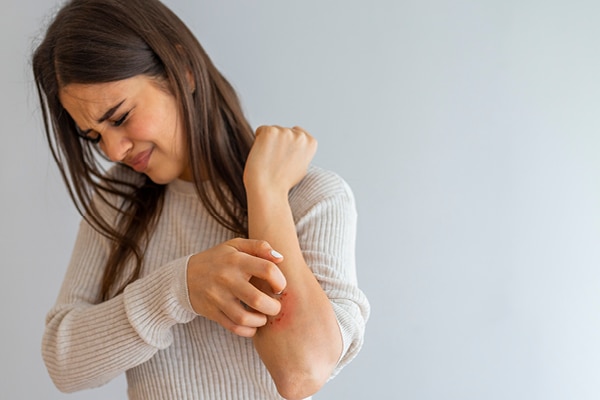
As mentioned above, while a few forms of hives can be caused by temperature fluctuations, infections, and even underlying conditions, more often than not, hives are caused by allergic reactions. What happens is, when you come in contact with something that's triggering for you, your body releases chemicals called histamines which are generally used to protect it from infections.
However, sometimes, histamines also cause swelling — the welts and wheals that become visible when you get hives — along with itching. It's difficult to pinpoint an actual cause of hives, therefore, it's always best to consult a medical professional to understand why you're getting hives, because they'll be able to give you a perspective that's specific to your situation.
Symptoms Of Hives
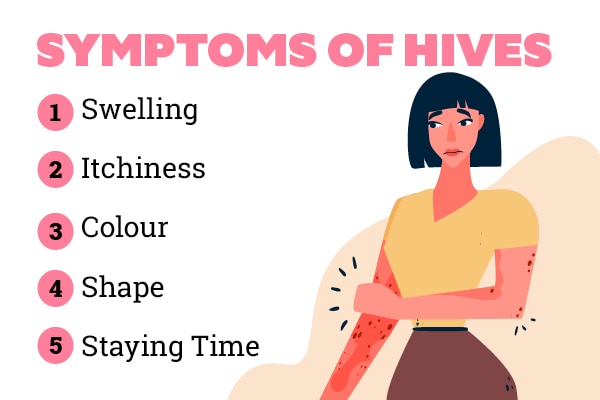
Hives have a few tell-tale signs that set them apart from other skin conditions; read on to know its symptoms.
01. Swelling
Wheals, welts, nettle rashes — whatever you want to call it, hives create raised lumps on the body. They may appear in batches, or alone, they may spread, grow larger, or even change shape — but the one thing that remains consistent is that they are swollen.
02. Itchiness
Hives are always, always itchy! Due to the histamines being released in the body, hives can itch like crazy, sometimes severely too, which is why a lot of anti-itch and cooling, calming lotions are prescribed to treat hives.
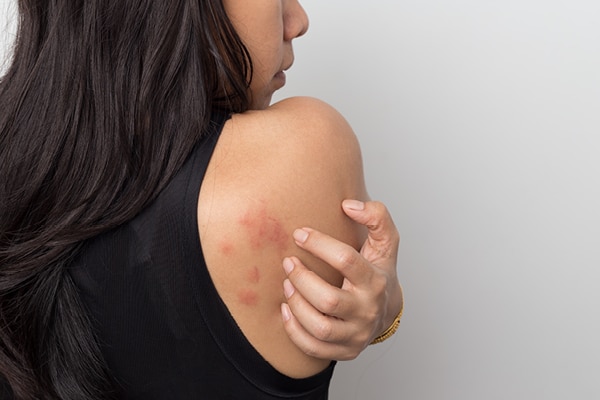
03. Colour
The welts caused by hives are generally red in colour, but sometimes, may also be the same colour as your skin. When pressed on or applied pressure, hives could also turn white.
04. Shape
Hives don't have a particular shape — they may appear small or large, round or ring-shaped, or even a completely random indistinguishable shape. In the case of dermatographism, for instance, hives could take the shape of the pressure that's been applied to the skin; so if someone drew a star on their arm with a stick and they had dermatographism, they would develop hives in that shape.
05. Staying Time
Hives can stay on the body between 30 minutes to an hour, to a few days. So, while their staying time may differ, it's important to distinguish what type of hives you have so they can be treated accordingly.
Hives Treatment

Treating hives, apart from anaphylaxis, which needs immediate medical care, is actually not as hard as it sounds! The first step to treating any skin condition like this, however, is to pinpoint the cause that's specific to your situation — which is why it's important to visit a medical professional. If you see the symptoms of hives on your body, visit your doctor immediately — they may perform a few tests to understand why you got it, especially if it was due to an allergic reaction.
"Hives require immediate attention from the doctor, and you have to be on antiallergic tablets for the hives to go," explains Dr. Sarkar. "If you develop hives once, you'll always have a tendency to have it the moment you get exposed to the irritant factor. Identifying the irritant is very important, specifically when you have hives," she further cautions.
Other forms of treatment for hives can include prescribed antihistamines to prevent future reactions, avoiding hot water, staying clear of the irritated area, and turning to cool, lukewarm baths.
Home Remedies For Hives
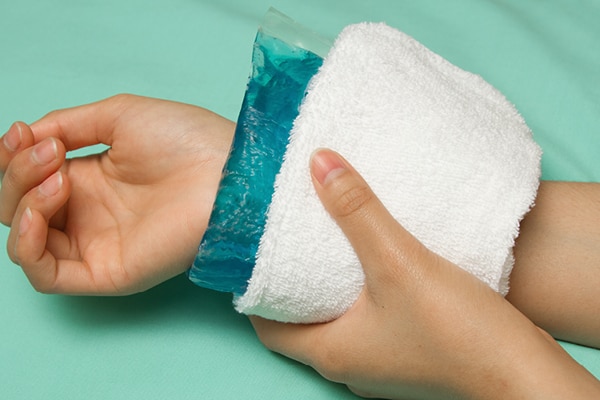
Here's some good news: You don't always need prescription drugs to treat hives! If you have a mild case that isn't due to an allergic reaction or any underlying conditions, you can treat the condition at home — in fact, it may actually disappear on its own, even without treatment. But hives can be itchy, and if you want to take some quick-relief measures at home to avoid the discomfort, here are a few home remedies you can use for hives:
01. Cold Compress
A cold compress is the easiest way to avoid the discomfort caused by hives. You can use it on the affected area for upto 10 minutes, and you should see immediate relief with relatively calmer looking skin.
02. Keeping Things Cool
Lightweight clothing, cold showers, and avoiding heat and sunlight can go a long way in calming down the irritation caused by hives. Avoid products that could trigger the itchiness further, and turn to cooling, calming products that can take care of the itch.
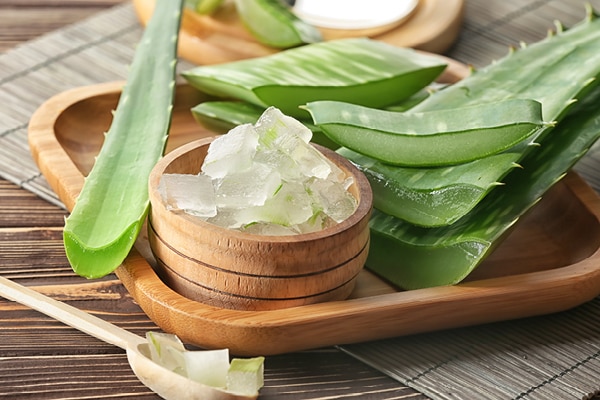
03. Aloe Vera
Is there anything aloe vera can't do? Since it's a natural anti-inflammatory ingredient, applying an aloe vera gel topically on your hives a few times a day can help soothe the irritation like no other. Added bonus? It's cooling too!
Difference Between Hives And Rashes
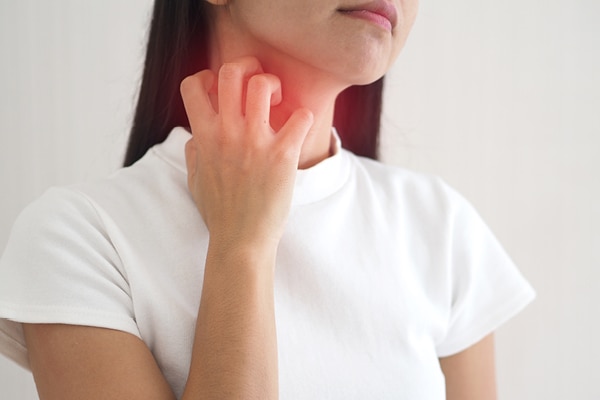
While a few may view the two as interchangeable, hives and rashes are actually two different things. Dr. Sarkar gave us some much-needed clarity in identifying the difference between the two; "The difference between hives and rashes is the causative agent of it. Hives are specifically allergic reactions that come in the form of raised wheals, which can come in clusters or are sometimes singular. It will rarely be painful — there is an entity in our skin that can cause painful hives as well. Hives can sometimes go without doing anything, by themselves in a span of a few hours, or sometimes as quickly as 30 minutes. Hives can come on any part of the body, including your internal systems," she said.
On rashes, she further continued, "When you talk about rashes, they are normally generalised, itchy, red-coloured patches on your body. They could be due to fungal infections, viral fever, dengue, and even occur post-Covid. They can appear in infants as a diaper rash. In adults, they can also get eczema. So rashes have a widespread basket of causative agents, and they don't disappear by themselves. They require medication from the doctor, and until and unless an antihistamine or a topical calming lotion is given, they don't subside."
When To See A Doctor

If you have been experiencing symptoms close to anaphylaxis, visit the emergency room immediately! Otherwise, visit your doctor when your symptoms are getting worse or lasting more than a few days, the welts become painful, or if the symptoms start interfering with your daily life.
FAQs
01) What foods help prevent hives?
You should stick to low-histamine foods if your system is particularly sensitive, ranging from veggies, protein, carbs, and fruits. Avoid allergy-triggering foods such as nuts.
02) How long do hives last?
Hives typically last between a few hours to a few days, but may go away quicker with treatment.
03) How long should hives last in a child?
Just like with adults, the amount of time hives last in a child varies according to the underlying cause. In general, they can go away in any time between a few hours to a few days.
04) What should you not do when you have hives?
First up, you should avoid any triggers that may cause hives. Take cool showers, use sun protection, and use medication that may have been recommended by your doctor.

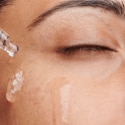
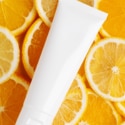






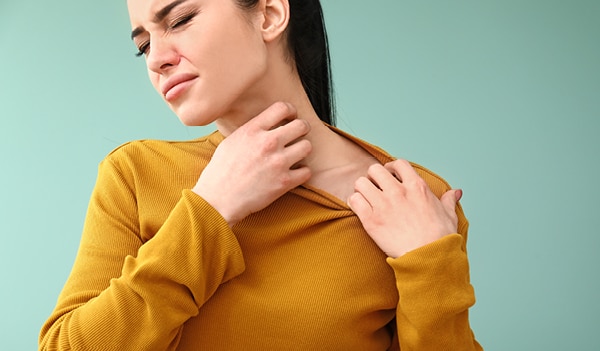






 Privacy Notice
Privacy Notice
Written by Nishtha Bhalla on 22nd Feb 2022
Nishtha is a freelance writer who loves all things beauty, fashion, culture, and lifestyle. With content covering a variety of topics, she brings a holistic, nuanced perspective to her writing. In her free time, she can be found watching reruns of The Office, reading anything she can get her hands on, and experimenting with astrology.